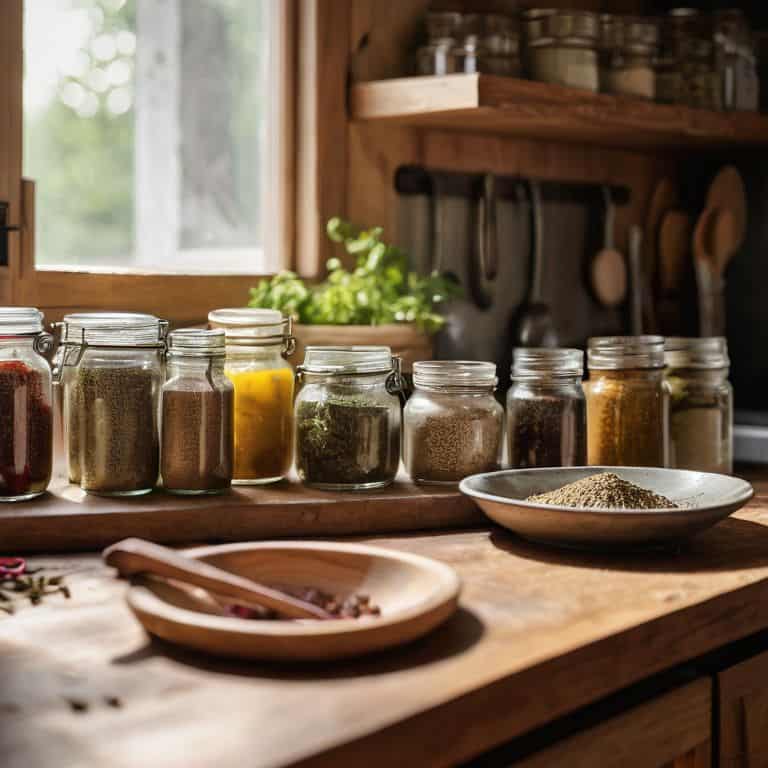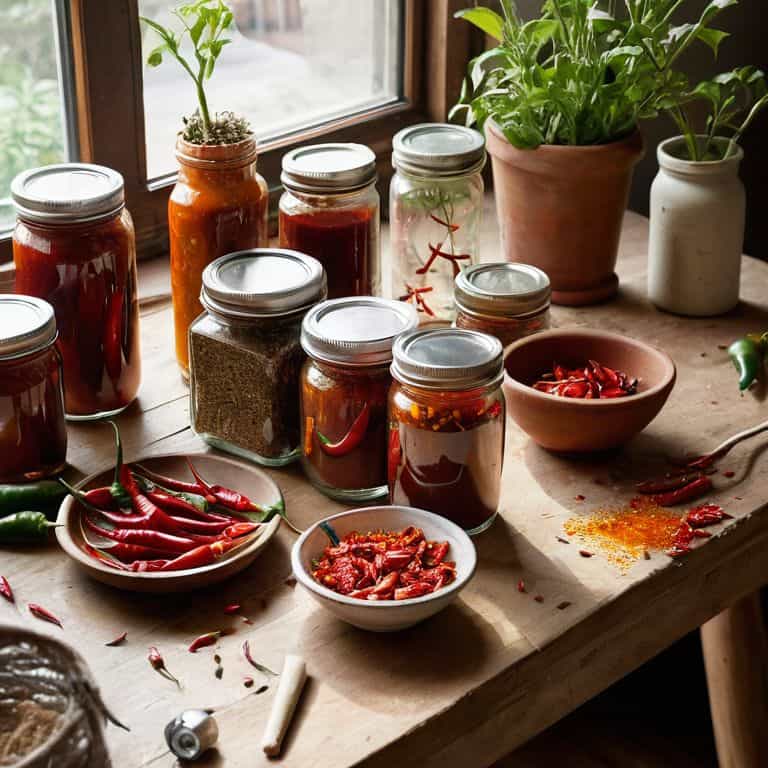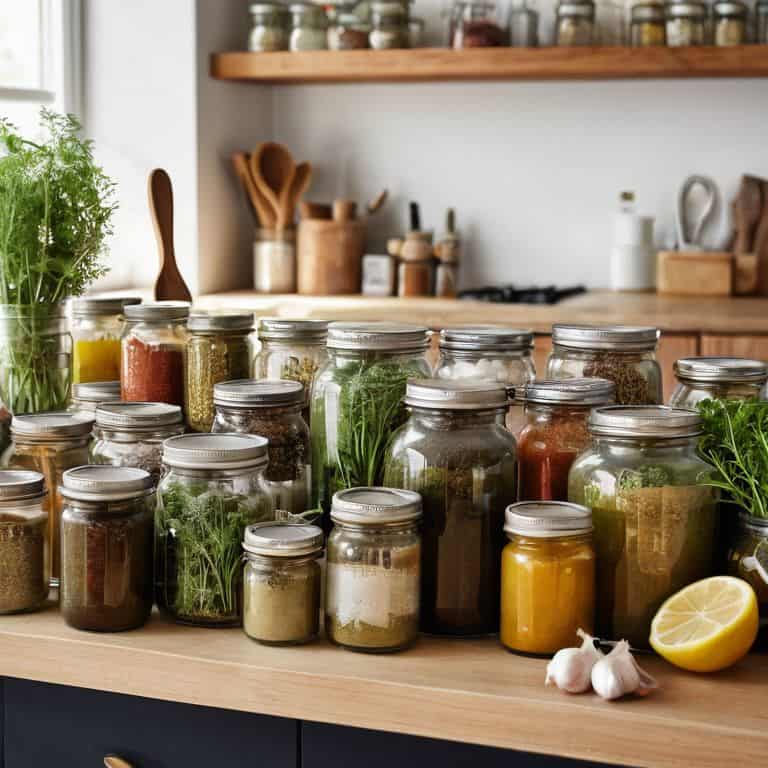I still remember the day I decided to ditch the commercial condiments and learn how to make homemade condiments. It was a revelation – the flavors were more vibrant, the ingredients were fresher, and the sense of accomplishment was unbeatable. But what really sparked my passion was the realization that anyone can create their own signature condiments with just a few simple ingredients and some creativity. The myth that making your own condiments is tedious or complicated is just that – a myth. With a little practice, you can whip up a batch of your favorite sauce or relish in no time.
In this article, I’ll share my own experiences and tips on how to make homemade condiments that will elevate your dishes to the next level. I’ll walk you through the process of creating your own unique flavor profiles, from spicy hot sauces to tangy pickles. You’ll learn how to experiment with different ingredients, how to balance flavors, and how to troubleshoot common issues. My goal is to empower you to take control of your condiment game and start creating your own delicious, homemade condiments that will make your taste buds dance. So, let’s get started and unlock the world of homemade condiments together!
Table of Contents
- Guide Overview: What You'll Need
- Step-by-Step Instructions
- Homemade Condiments Unleashed
- Unleash Your Condiment Chaos: 5 Tips to Get You Started
- Key Takeaways to Unlock Your Condiment Creation Potential
- The Art of Homemade Condiments
- Conclusion: Unleashing Your Inner Condiment Creator
- Frequently Asked Questions
Guide Overview: What You'll Need

Total Time: 1 hour 15 minutes
Estimated Cost: $10 – $30
Difficulty Level: Easy
Tools Required
- Blender (or food processor)
- Saucepan (stainless steel or non-stick)
- Glass Jars (with lids for storage)
- Measuring Cups (dry and liquid)
- Measuring Spoons
Supplies & Materials
- Fresh or Dried Herbs (such as basil, oregano, or thyme)
- Spices (such as paprika, garlic powder, or onion powder)
- Vinegar (apple cider or white wine)
- Sugar
- Salt
Step-by-Step Instructions
- 1. First, let’s start with the basics: gathering our ingredients. For a simple condiment like homemade ketchup, you’ll need a few cups of chopped fresh tomatoes, some onions, garlic, vinegar, and spices. I like to use heirloom tomatoes for their unique flavor profiles, but any fresh tomato will do. Make sure to wash and chop them up into small pieces so they’re ready to go.
- 2. Next, we need to create our spice blend. This is where the magic happens, and you get to customize your condiment to your taste. I’m a big fan of smoked paprika for adding a deep, smoky flavor, but you can experiment with different spices like cumin, coriander, or chili powder. Mix them together in a small bowl and set them aside for now.
- 3. Now it’s time to sauté our aromatics. Heat up a tablespoon of oil in a large saucepan over medium heat, then add in your chopped onions and garlic. I like to use a cast-iron skillet for its even heat distribution, but any saucepan will do. Cook them down until they’re soft and translucent, stirring occasionally to prevent burning.
- 4. With our aromatics cooked, it’s time to add in our tomatoes and spices. Pour in your chopped tomatoes, spice blend, and a splash of vinegar, then stir everything together. Bring the mixture to a simmer and let it cook for about 20-30 minutes, stirring occasionally, until it’s thickened up into a rich, velvety paste.
- 5. While our ketchup is cooking, let’s prepare our jars. You’ll need a few clean glass jars with tight-fitting lids to store your condiments. I like to use mason jars for their rustic charm, but any glass jar will do. Make sure to wash them in hot soapy water, then dry them thoroughly with a clean towel.
- 6. Once our ketchup has finished cooking, it’s time to fill our jars. Use a ladle to scoop the hot ketchup into your prepared jars, leaving about a quarter inch of headspace at the top. I like to use a funnel to prevent spills and make the process easier. Wipe the rims with a clean cloth, then screw on the lids and let them cool to room temperature.
- 7. Finally, let’s seal and store our jars. Once our jars have cooled, check the seals by pressing on the top of each lid. If the lid doesn’t move and the seal is tight, you’re good to go. Store your jars in the fridge to slow down the fermentation process, and enjoy your homemade condiments within the next few weeks. Remember to always label and date your jars so you can keep track of what you’ve made and when.
Homemade Condiments Unleashed

As I always say, the key to unleashing your inner flavor rebel is to experiment with different ingredients and techniques. When it comes to homemade condiments, the possibilities are endless. I love whipping up a DIY hot sauce from scratch using fresh chili peppers from my urban garden. The process is not only rewarding, but it also allows me to control the level of heat and flavor that goes into each bottle.
One of my favorite things to make is a homemade relish recipe using seasonal ingredients like cucumbers and bell peppers. The best ingredients for homemade ketchup are also a great starting point for creating unique flavor profiles. I’ve found that using a combination of fresh tomatoes, onions, and spices can result in a rich and tangy condiment that’s perfect for topping burgers or fries. By focusing on small batch condiment production, I can ensure that each jar is filled with love and care.
When it comes to pairing condiments with different dishes, the options are vast. I enjoy experimenting with flavor profiles for artisanal mustards to find the perfect match for my favorite foods. Whether it’s a spicy mustard to pair with grilled meats or a sweet and tangy relish to top a salad, the right condiment can elevate any meal. By embracing the world of homemade condiments, you’ll discover a whole new world of condiment pairing ideas that will take your cooking to the next level.
Best Ingredients for Artisanal Ketchups
When it comes to crafting artisanal ketchups, the right ingredients can make all the difference. I’m a firm believer in using fresh, locally-sourced produce to create a depth of flavor that’s hard to find in store-bought condiments. For my signature ketchups, I love experimenting with heirloom tomatoes, caramelized onions, and a hint of smoked paprika. The key is to balance sweetness, tanginess, and a touch of smokiness to create a truly unique flavor profile.
I also like to mix things up by incorporating seasonal ingredients, like roasted garlic during the winter months or fresh basil in the summer. The possibilities are endless, and that’s what makes artisanal ketchup-making so exciting. By combining these ingredients in different ways, you can create a range of flavors that will elevate your dishes and add a personal touch to your cooking.
Diy Hot Sauce From Scratch
Now that we’ve unleashed the flavor beast, let’s talk about one of my personal favorites: DIY hot sauce from scratch. I mean, what’s not to love? You get to combine your favorite peppers, vinegar, and spices to create a sauce that’s tailored to your taste buds. I’ve experimented with everything from habaneros to ghost peppers, and the best part is, you can adjust the heat level to your liking.
My fermentation station is always buzzing with new hot sauce batches, and I encourage you to get creative with yours. Try pairing jalapenos with garlic, or carrots with ginger – the possibilities are endless, and that’s what makes DIY hot sauce so addictive.
Unleash Your Condiment Chaos: 5 Tips to Get You Started

- Start with fresh, locally-sourced ingredients to ensure your condiments are bursting with flavor
- Experiment with different spices and seasonings to create unique flavor profiles that reflect your personality
- Don’t be afraid to get a little messy and try new things – it’s all part of the homemade condiment journey
- Infuse your condiments with love and patience, letting them simmer and mature to develop deep, rich flavors
- Remember, the best condiments are the ones that tell a story, so don’t be afraid to add your own secret ingredients and twists to make them truly special
Key Takeaways to Unlock Your Condiment Creation Potential
By embracing the art of homemade condiment-making, you’ll not only add a personal touch to your dishes but also develop a deeper connection to the food you eat and the ingredients you use
Experimenting with various ingredients and techniques, such as fermentation and infusion, will help you create unique flavor profiles that elevate your meals from ordinary to extraordinary
Remember, the world of homemade condiments is all about creativity and experimentation, so don’t be afraid to try new things, make mistakes, and adjust recipes to suit your taste preferences and dietary needs
The Art of Homemade Condiments
The magic happens when you trade recipes for experiments and measuring cups for intuition – that’s when your homemade condiments transform from mere toppings to taste bud revolutions.
Tom Navarro
Conclusion: Unleashing Your Inner Condiment Creator
As we wrap up this journey into the world of homemade condiments, remember that the key to creating something truly special lies in experimentation and embracing the unknown. We’ve covered the basics of making your own condiments from scratch, from hot sauces to artisanal ketchups, and even explored the best ingredients to use for each. The most important thing to take away is that making homemade condiments is not just about following a recipe, but about understanding the process and having fun with it.
So, as you stand in your kitchen, surrounded by the aromas and flavors of your latest creations, remember that you have the power to elevate any dish with a simple condiment. Don’t be afraid to try new things, to push the boundaries of what you thought was possible, and to make mistakes – they’re all part of the journey. With every jar you fill and every bottle you label, you’re not just creating condiments, you’re creating a piece of yourself, and that’s the most rewarding part of all.
Frequently Asked Questions
What are the best ways to store homemade condiments to ensure they last a long time?
Storage is key! I swear by glass jars with tight-fitting lids and a cool, dark spot in my pantry. For hot sauces and ketchups, I use smaller jars to prevent oxidation. And for my famous pickles, I opt for larger crocks with weights to keep them submerged in their briny bath. This way, my homemade condiments stay fresh and full of flavor for months to come!
Can I customize homemade condiment recipes to suit specific dietary restrictions or preferences?
Absolutely, my friend! I’m all about experimentation and adaptation in the kitchen. Whether you’re gluten-free, vegan, or low-sodium, you can tweak my recipes to fit your needs. Swap out ingredients, adjust the spice levels, or try new flavor combinations – the possibilities are endless, and I encourage you to get creative and make these condiments your own!
How do I know if my homemade condiments have fermented or aged correctly to achieve the desired flavor?
Check your condiments regularly – taste, smell, and look for signs of fermentation, like bubbles or a tangy aroma. For hot sauce, it’s usually ready when it’s thickened and developed a deep flavor. For ketchups, it’s all about the balance of sweet and tangy. Trust your instincts, and don’t be afraid to let them age a bit longer if needed – patience is key to unlocking that perfect flavor!
